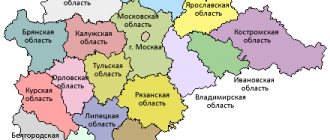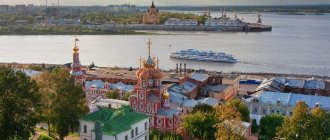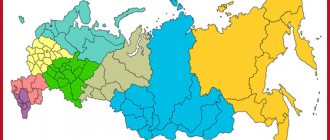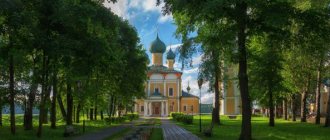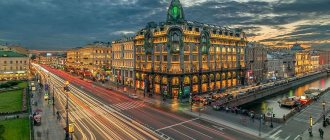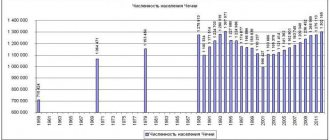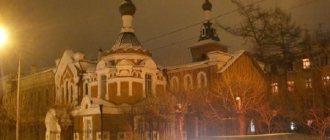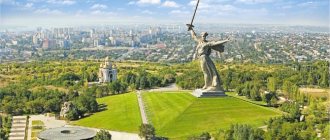The Vladimir region was founded in 1944 and is part of the Central Federal District. Consists of sixteen districts. The total population for 2022 is 1,358,538. The regional center is the city of Vladimir, located in the east, 178 kilometers from Moscow.
Suzdal Kremlin
What holiday is it today?
January 22, 2022, Saturday
Today are holidays, events: Day of Unification of Ukraine Tomorrow: Premiere of the opera “Eugene Onegin” at the Bolshoi Theater
Today is the Orthodox holiday: Martyr Polyeuctus. St. Philip, Metropolitan of Moscow and All Russia, wonderworker... Tomorrow: St. Gregory, Bishop of Nyssa. Venerable Markian the presbyter. Venerable Dometian, Bishop of Melitino. St. Paul of Komel, wonderworker, student of St. Sergius of Radonezh. Saint Theophan, the Recluse of Vyshensky...
Today is a national holiday: St. Philip's Day... Tomorrow: Gregory - Summer Guide...
Seasons
Seasons, four periods of the year (spring, summer, autumn and winter) characterized by certain average temperatures. The period during which the Sun passes through one of these sectors is called the season. Spring in the Northern Hemisphere and autumn in the Southern Hemisphere begin when the Sun passes through the initial circle of declination and its right ascension is 0° (vernal equinox). Summer in the Northern Hemisphere and winter in the Southern Hemisphere occur when the sun's right ascension is 90° (summer solstice). Autumn in the Northern Hemisphere and spring in the Southern Hemisphere begin when the sun's right ascension is 180° (autumnal equinox). The beginning of winter in the Northern Hemisphere and summer in the Southern Hemisphere is considered to be the winter solstice, when the direct ascension of the Sun is 270°... Next: Seasons. Russian folk calendar. Monthly words...
Mushrooms of the Vladimir region
Of the edible mushrooms and mushrooms that are edible subject to special preparation measures, the following are found in the Vladimir region: saffron milk caps, boletus mushrooms, boletus mushrooms, porcini mushrooms, aspen mushrooms, chanterelles, russula, fly mushrooms, champignons, boletus mushrooms, and hill mushrooms.
The mushroom season begins in early spring, when the first morels and honey mushrooms grow. In summer, porcini mushrooms, russula, and fly mushrooms appear. From the end of summer, mushroom pickers' baskets begin to fill with boletuses and saffron milk caps.
Among the poisonous mushrooms common in this area are: pale toadstools, false mushrooms, and red fly agaric. The special danger of these mushrooms lies in the fact that in appearance they are doubles of edible mushrooms, so when going into the forest, it is important to know their distinctive features.
Folk calendar about every day
Every day one season always replaces another and this determines a person’s way of life. In connection with this, a folk calendar was formed in which there were practically no nameless, unmarked days. Every day was special, had its own purpose. All this was determined by climate conditions and astrological phenomena.
A calendar is a system for counting periods of time. The first calendars arose a long time ago, in ancient times, because there was a need to measure time. The word calendar comes from the Latin words caleo - to proclaim and calendarium - debt book. This is due to the fact that in Ancient Rome the beginning of each month was especially proclaimed, and because it was customary to pay debts on the first day of the month. Different peoples counted time differently. Some calendars are based on the changing phases of the moon - lunar calendars; in others - the change of seasons - sunny; in others, the length of the year was coordinated with the change of seasons, and the counting of months was associated with the phases of the Moon. Such calendars are called lunisolar.
In Rus', the calendar was called a monthly calendar. Every day, the month book covered the entire year of peasant life, “describing” day by day, month after month, where each day had its own holidays or weekdays, customs and superstitions, traditions and rituals, natural signs and phenomena. The cyclical nature of the calendar is reminiscent of human life, where spring is youth, summer is heyday, autumn is the time of harvesting fruits (it’s good if there are some, otherwise you can live your life without collecting fruits), winter is the time of wisdom and peace. This cyclicality and rhythm determined the way of life of the farmer. The folk calendar was an agricultural calendar, which was reflected in the names of the months, folk signs, rituals and customs. Even the determination of the timing and duration of the seasons is associated with real climatic conditions. Hence the discrepancy between the names of the months in different areas... Next: Folk calendar...
Navigation
The Vladimir region is one of the oldest historical and artistic centers of the Russian land. The territories that it includes have long formed the core of the Vladimir-Suzdal principality, and since the end of the 18th century - the Vladimir province.
The Grand Duchy of Vladimir (1157 - 1362) was formed in connection with the transfer by Grand Duke Andrei Bogolyubsky of the capital of the Rostov-Suzdal Principality to the city of Vladimir on Klyazma. There are several points of view on the founding date of the city. According to one version, it was founded by Prince Vladimir Svyatoslavich in 990, according to another - in 1108 by Prince Vladimir Monomakh. Under Prince Andrei Bogolyubsky and his successors, the city flourished.
In the second half of the 12th - early 13th centuries, the Grand Duchy of Vladimir was the largest economic, political and cultural center of Rus'. The transfer of the political center of Rus' to Vladimir played a big role in the formation of the Great Russian people and the Russian nation. At the beginning of the 13th century, the Tatar-Mongol invasion dealt an irreparable blow to the economic and political power of the principality. In 1238, Vladimir, Pereslavl-Zalessky, Suzdal, and Yuryev-Polsky were devastated.
The culture of the Grand Duchy of Vladimir left a deep mark on the history of all North-Eastern Rus'. The Vladimir architectural school influenced the stone architecture of Moscow and other Russian cities. Among the outstanding monuments of Vladimir-Suzdal architecture of the 12th-13th centuries are the white stone Assumption and Demetrius Cathedrals, the Golden Gate, and the Church of the Intercession on the Nerl, which have survived to this day.
Since the time of Ivan Kalita, the role of Vladimir as a capital city has ceased. However, the political and cultural traditions of the Grand Duchy of Vladimir were adopted by the Grand Duchy of Moscow during the formation of the Russian centralized state. The process of annexing the Vladimir lands to Moscow actually ended in the 16th century under Ivan the Terrible. Around this time, it was on the territory of the Vladimir lands that the institution of itinerant small traders - Ofeni - emerged, and the invented conventional Ofenian or Suzdal language was formed in which they communicated. In addition to the fact that in conditions of a poorly developed trade network and poor roads, the ofeni played a significant role in supplying the population with goods, while moving over long distances, they also performed a communicative function.
In 1778, the Vladimir province from 13 counties, in the same year it was transformed into a governorship, which included 14 counties: Alexandrovsky, Vladimirsky, Gorokhovetsky, Vyaznikovsky, Kirzhachsky, Kovrovsky, Melenkovsky, Muromsky, Pereslavsky, Pokrovsky, Sudogodsky, Suzdal, Shuisky, Yuryev-Polsky. After the accession of Paul I, the governorships were liquidated, and the Vladimir governorship was again transformed into a province.
The Vladimir province was one of the most industrially developed provinces in the European part of Russia. Since the 17th century, textile production has been developing there (manufactories in Ivanovo-Voznesensk, Shuya, Vyazniki, Murom, etc.). The ironworks of the Botashevs operated in the Melenkovsky district. In the second half of the 18th century, the Maltsov glass factories were founded in Sudogodsky district (now Gus-Khrustalny district). A feature of the development of the economy of the Vladimir province was that most industrial establishments were located in villages and settlements.
Handicrafts have become widespread in the province. Icon painting has been known since the end of the 17th century (Shuya, Palekh, Mstera). Vladimir and Suzdal masons, Pokrovsky and Gorokhovets carpenters received all-Russian fame.
At the end of the 19th century, the area of the province was 42.8 thousand square meters. versts, population - 1,570,000 people, there were over 1,350 factories, about 150 thousand workers. The Vladimir province is one of the centers of textile production; 31 percent of the cotton fabrics produced in Russia are produced here.
After the revolutionary events of 1917 and the civil war, the province remained independent until the administrative reform of 1929, when the Ivanovo industrial region was formed, which included most of the Vladimir province. The remaining territories were included in the Moscow and Nizhny Novgorod regions.
With the beginning of industrialization, major changes occurred in the economy; enterprises in the textile, engineering, instrument-making and glass industries were built.
During the Great Patriotic War, defense enterprises and, first of all, the Kovrov plant, where the famous design bureau of gunsmiths headed by V.A. Degtyarev operated, made a great contribution to the victory.
On August 14, 1944, the Vladimir region from 23 districts of the Gorky, Ivanovo and Moscow regions. Subsequently, after several administrative reforms, 16 existing districts were formed.
In 1945, the first stage of the Vladimir Tractor Plant was put into operation. In the 1950s - 70s, a number of large industrial enterprises were built and reconstructed, the Vladimir region became one of the most industrially developed regions of Russia.
Fishing calendar for every day
The fishing calendar should not be taken as an absolutely indisputable truth. Fish biting is greatly influenced by a whole range of natural factors, as well as the influence on the nature of man himself. You must not forget that the fish’s bite depends and is determined not only by the calendar dates and biological cycles of their life, reflected in the calendar, but also, no less, by the state of their habitat; the bite also depends on weather conditions: air and water temperatures, cloudiness, wind direction and strength, etc... Next: Fishing calendar...
Transport connection
On the map of the Vladimir region with its districts you can see a well-developed network of railways and roads. They serve the flow of cargo and passengers in three directions of the Trans-Siberian Railway. Part of the region is part of the capital's railway ring.
The satellite map of the Vladimir region shows highways passing through the territory in the direction of:
- Yaroslavl;
- Ryazan;
- Nizhny Novgorod.
The main highways of the region: A108, P72 and P125. There are two branches of oil pipelines running through the region. Vladimir has its own international airport.
Orthodox calendar about every day
Orthodox calendar: Orthodox, Church and Christian holidays.
The church year is an alternation of weekdays and holidays. On weekdays, a person is called to work “by the sweat of his brow to earn his bread.” Holidays are given in order to feel liberation, to rise above the bustle and routine of the world, to feel involved in the highest of worlds, “where there are no illnesses, sorrows and sighs, but endless life.” Since ancient times, holiday cycles have been associated with the seasons. The pagans associated them with the worship of the forces of nature, the cult of which in the Old Testament was replaced by gratitude to the Creator for the universe. And although the connection between holidays and the seasons has not completely lost its power, since God is present in everything, in the plant and animal world, in human works, it nevertheless faded into the background, giving way to a spiritual foundation built on the Sacred Scriptures. The history of Orthodox holidays dates back to the times of the Old Testament. Each of the Orthodox holidays is dedicated to the remembrance of the most important events in the life of Jesus Christ and the Mother of God, as well as the memory of saints... Next: Orthodox calendar...
Lakes of the Vladimir region
There are more than 4 hundred lakes in the region, their total area is 5 thousand hectares. Most of the lakes are shallow, have no drainage, and are quickly overgrown with a layer of peat. The lakes of the region have a variety of shapes: oval, horseshoe-shaped, round. The shores are most often either sandy or marshy. The coastline has simple outlines. Some lakes located in groups are connected by underground drains. Lakes have different origins; there are floodplain, karst, alluvial, and glacial lakes.
The largest lake is Kshara, whose depth is more than 60 meters.
Russian folk calendar for every day
The word “sign” comes from the word “notice”, i.e. observe. As a result of observing what happens around a person every day, he accumulates life experience. This knowledge was passed down from generation to generation, carefully preserved and people trusted it as a sacred book. Many signs have come to us from the depths of centuries without losing their knowledge. Each of us is free to choose: to dismiss all this as an absurd superstition or to take a closer look at the signs and take the centuries-old experience of generations more seriously. Most of us, when taking exams, ask them to scold them, boasting about some kind of good fortune or luck, spit so as not to jinx them or knock on wood, take a detour if a black cat crossed the road, are afraid of the number 13 and much more. And who among us does not have lucky things, numbers? Who has never resorted to the help of fate at least once in their life, who has not believed in secrets? It’s as if everything connected with signs is hidden somewhere deep in our subconscious. Often we remember them mechanically, unconsciously, or just as a joke. But, undoubtedly, the signs contain a lot of accurate knowledge and practical wisdom of our ancestors. They cover all the characteristic, often difficult to perceive, natural phenomena. Signs have preserved a lot of what was in old folk holidays and customs; they help predict the weather, grow crops... Next: Folk signs...
Holiday calendar, dates and events of the year
All state and professional holidays in Russia, including significant World and International holidays, and other equally interesting holidays and events about every day.
The holiday has always kept pace with the history of mankind. Social time can be divided into three types: everyday life (weekdays), weekends and holidays. Everyday life is a series of practices repeated day after day and every day (work). Weekends are regular breaks from the rush of everyday life. It is believed that on weekends a person should restore his strength after working days. Day off, non-working day. A holiday is a day of celebration established in honor or in memory of someone or something. A day or series of days celebrated by the church in memory of a religious event or saint... Next: Calendar...
Soil diversity of the Vladimir region
The following types of soils are found in the region:
fertile dark-colored carbonate, found in the forests of Opole gray forest, found in the same area
turf alluvial, found near the banks of the largest rivers
soddy-podzolic, subdivided into medium loamy, sandy loam and sandy types and found in coniferous and mixed forests
podzolic-bog and bog species, found in the area of the Gorokhovets bogs and Meshchera
It should be noted that soils contain insufficient amounts of boron and sulfur.
Prayer book, Orthodox prayers for every day
Prayer is the most powerful means for healing all illnesses - both physical and mental. Prayers can be laudatory or grateful, petitionary and repentant. If we have offended God, sinned, we must ask Him for forgiveness, that is, repent. Such prayers are called repentant prayers. If everything is fine with us, if we and our loved ones are healthy and prosperous, if we have a place to live, something to wear, something to eat, we must glorify and thank God for this. Such prayers are called praise or thanksgiving. If some misfortune, illness, trouble or need happens, you need to ask God for help. Such prayers are called petitionary... Next: Orthodox prayers...
Zodiac, astrological, eastern calendar. Zodiac signs
In ancient times, to establish the calendar, priests used knowledge of the positions of all the planets. Before the reform of Peter 1, the New Year was celebrated on the Day of the Autumn Equinox. On this day, according to ancient legend, the most peaceful treaty was concluded between the Great Race (ancient Slavs) and the Great Dragon (ancient Chinese) and it was approximately 7518 years ago... For the ancient Slavs, the calendar month corresponded to the lunar cycle from new moon to new moon, taking into account such Thus, the relationship of the entire annual cycle with astronomical and natural phenomena. There was no coherent calendar system. The main natural phenomena are still considered to this day to be the days of the solar equinox and solstice - the Slavic holidays Maslenitsa, Kupala, Ovsen and Kolyada. But during the time of Peter 1, all ancient Slavic calendars were abolished and a new Western European calendar from the Nativity of Christ (Julian calendar) was introduced, while the beginning of the calendar was moved to January 1. The Julian calendar (old style) did not take leap days into account and accumulated one extra day every 128 years. After the October Revolution in 1918, the Gregorian calendar (new style) was introduced in Russia, according to which an amendment of 13 days was introduced. The calendar of the ancient Slavs was based on two planets: the Sun and the Moon. And now they don’t use anything at all. The calendar has become static. There is no such thing as the calendar, it turns out, resting on some planet. Nobody even knows about it. There are just some standard numbers, there are months and holidays. The calendar is based on the Sun and Moon. Why is this so? Because these two luminaries influence the Earth. The Earth revolves around the Sun, and the Moon revolves around the Earth. And these two luminaries create the atmosphere on the planet. From here the calendar is built... Next: Astrological calendar...
Church of the Intercession on the Nerl
Church of the Intercession on the Nerl.
Bogolyubovo, Vladimir region. Photo: Sergey Lavrentyev / photobank “Lori” The Church of the Intercession on the Nerl was built not far from Bogolyubovo, at the confluence of two rivers - the Nerl and Klyazma. There was a trade route here. The church stood not far from the shore and, according to one version, was a ceremonial princely temple, and according to another, it served as an observation tower. To prevent the temple from flooding during floods, the builders built an artificial hill.
The church appeared during the reign of Andrei Bogolyubsky. According to the life of the prince, the temple was built in memory of his son Izyaslav, who died in a campaign against the Polovtsians. But researchers do not know the exact year of construction: the church dates back to 1158 or 1165.
The temple has retained its original 12th-century decor. The walls of the building are decorated with bas-reliefs depicting King David, who symbolized the wise ruler. There are doves on either side of David. They signify meekness and the Holy Spirit. There are also lions on the walls - the emblems of the Vladimir-Suzdal princes.
In the 18th century, the church could have been dismantled due to its dilapidation: the dome could barely hold up, and the bas-reliefs were damaged. However, the abbot was unable to agree on a price with the contractor, and the temple was abandoned. At the beginning of the 19th century, it was restored, but instead of updating the stucco in the interior, it was removed. The walls were surrounded by metal clamps, which can still be seen today.
After the revolution, the temple did not function. In 1928, a pioneer camp was located here for three weeks - the guests broke the glass and took out several icons from the iconostasis. The temple was restored by employees of the Vladimir Regional Museum.
In 1954, it turned out that the church was previously surrounded on three sides by white-stone open galleries: during archaeological research, scientists found the remains of a 12th-century foundation. Over time, the buildings collapsed.
In 1992, the Church of the Intercession on the Nerl was included in the UNESCO World Heritage List as part of the White Stone Monuments of Vladimir and Suzdal site.
Dream books online, interpretation of dreams
A dream book is nothing more than an interpreter of dreams and dreams, a translator of dreams. Since ancient times, people have been using dream books; dreams have always been given great importance, and people have often noticed the prophetic properties of some dreams. The dream book can become your faithful assistant every day and throughout your life, thanks to the dream interpreter you can always make the right decisions, the dream book will help you resist temptations in time, and will warn you against wrong steps and frivolous actions. Further…
